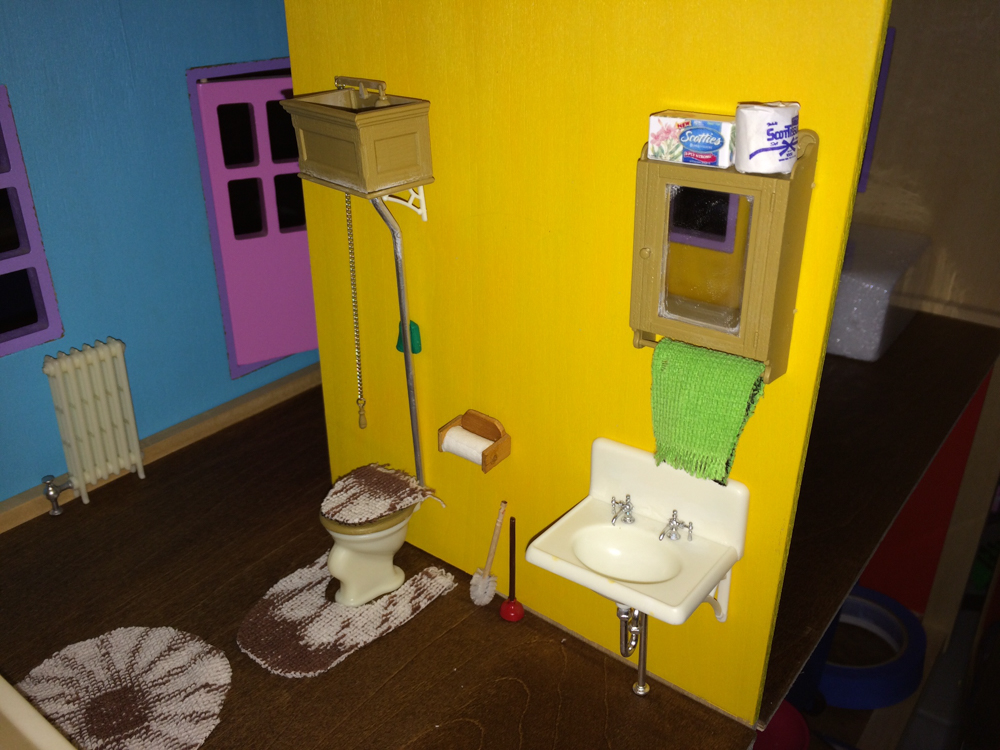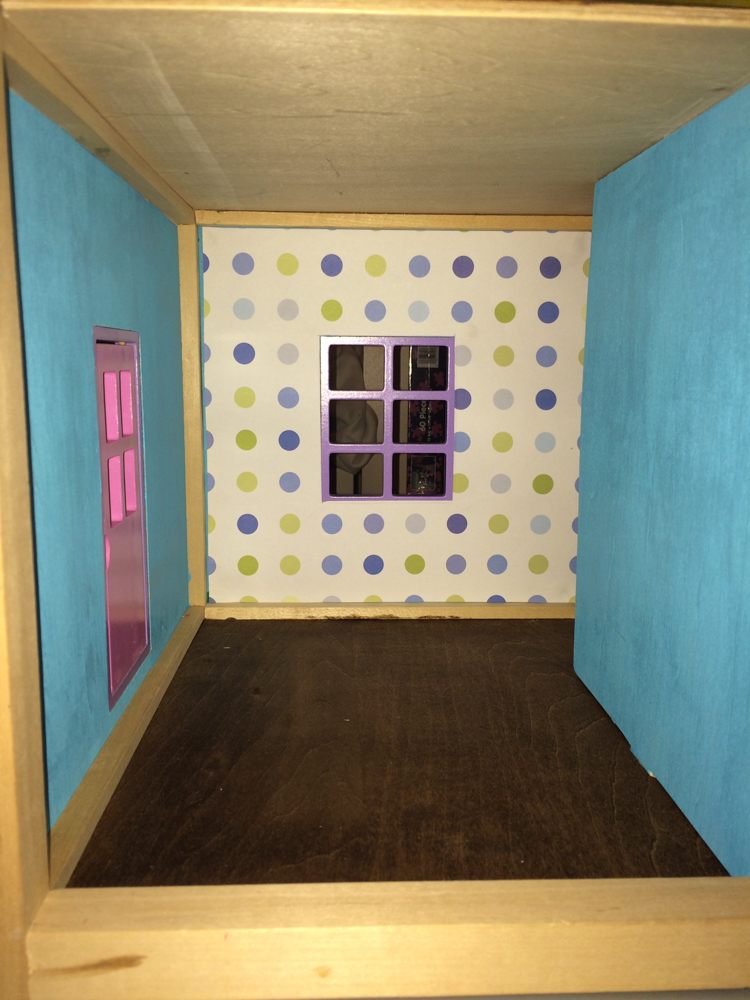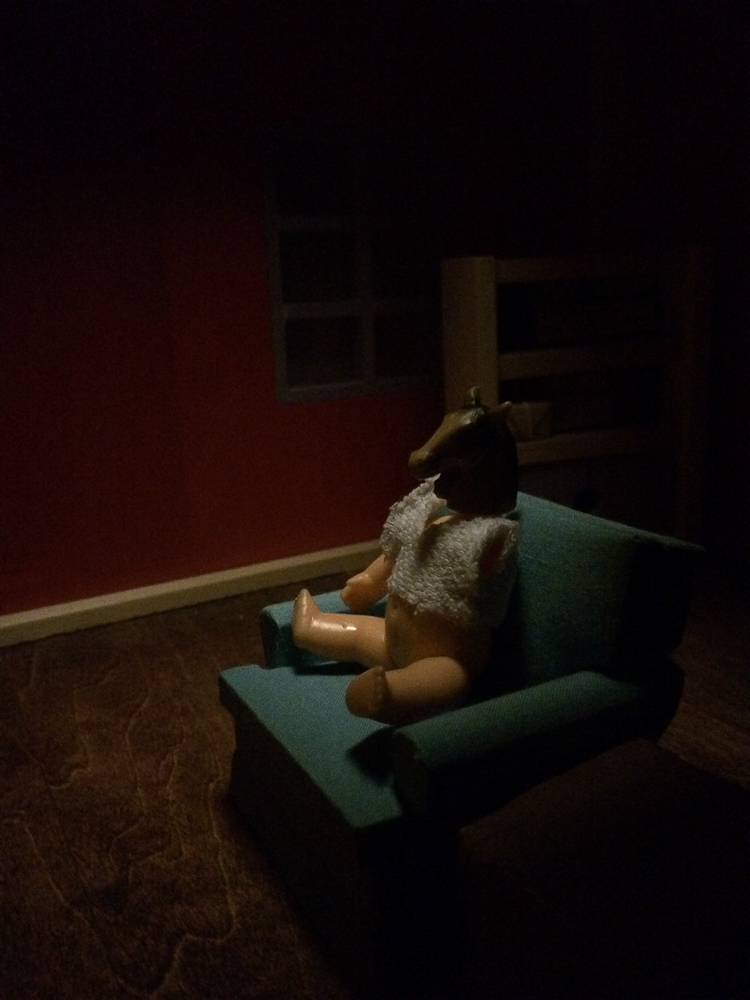My inspiration behind Horsebaby was my friend, Aaron White. He gets and shares my dark humor. I love him more then he knows. In fact, Horsebaby’s full name is Adub Horsebaby. When I first made Horsebaby I would text Aaron different images of HB drunk on the floor or just sitting on the toilet (HB also had a penis back then).
My husband (Andy LaViolette) and I met Rima Abunasser and Darin Bradley and discussed our film idea about HB to them. Rima and Darin helped us come up with a great script for HB and we spent a few late nights talking about shot ideas while I started making Horsebaby’s house. As the house came together we all got excited about shooting our ideas for his little world.
We cleared out our living room, rented and sourced gear from friends, and shooting began. Rima, Darin, and our friend, Patrick, would come over and help us shoot late into the night; we would have never finished this project without them. Several of the scenes were also puppeteered by our daughter, Hailey, who was barely eight years old at the time.
After all the late nights my husband edited together a beautiful film but we could not agree on a final edit. We showed it to many friends and they all loved it, I just couldn't commit to the final edit. A few months back our friend, Robert Gomez, came and stayed with us and we showed him the film.
Robert seemed to like the direction of the film and asked about the possibility of collaborating on a shortened version of the edit Andy had been working on. After we heard his self-titled new album, Zemog Otrebor, Andy and I both agreed it was worth re-imagining Horsebaby alongside the world of Robert’s music. Ultimately his music gave new life to the Horsebaby concept and we are already imagining ways that we can expand on more of his character because of our experience in working with Robert.
Buy Zemog Otrebor album. Links below:
https://zemogotrebor.bandcamp.com
https://itunes.apple.com/us/album/zemog-otrebor/id1294410777
New Monsoon video featuring Horsebaby and music by the great Zemog Otrebor. Album art work by Cameron Cox. Check out her amazing work:





































